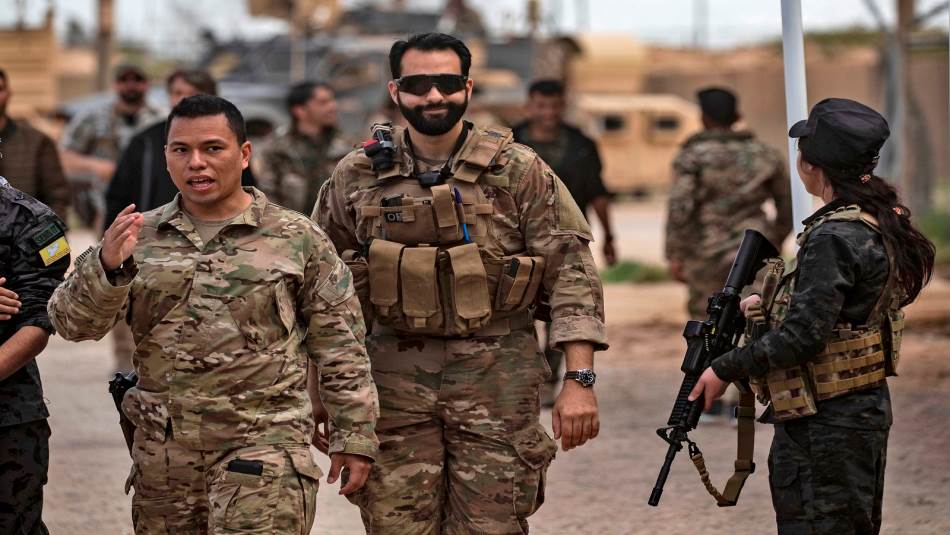The stage is set for a highly anticipated battle between Iran and America in eastern Syria, as Iranian preparations to launch an attack on American forces are no longer a secret. The local population has been fleeing their homes in numerous villages and towns, bearing witness to the mobilization of fighters and weaponry on both sides.
The conflict is likely to unfold along two main axes. The first axis revolves around the Al-Omar oil field and Koniko gas plant on the west bank of the Euphrates, where American forces are stationed. The second axis encompasses towns in the east of the river, currently under Iranian control.
Closed Circle of Fear: Racism in Turkey from Misinformation Turns Syrians’ Gratitude into Anger
Iran’s strategy involves launching a missile and artillery assault from across the river while simultaneously pushing their ground forces along the opposite bank. In response, the American forces have been consistently deploying additional equipment and fighters to the region. Their aviation presence has remained uninterrupted for at least two weeks.
Amidst the mutual mobilization and chaotic scene, it is challenging to discern which side will initiate the attack. Nevertheless, considering the geopolitical context and the nature of recent movements, it is evident that Iran holds the initiative while the Americans find themselves in a reactive position. The Revolutionary Guard has spent years preparing for this battle, aiming to secure control over both banks of the Euphrates River, thereby cutting off Iran’s fiercely hostile region from the land route to the Mediterranean.
Tehran also seeks to assert its power in the Middle East by directly challenging the American forces. Although Iran may suffer significant human losses, such an outcome would not be viewed as a defeat for their imperial project. On the contrary, it would strengthen Iran’s position and draw attention to its extensive reach, particularly if the confrontation expands to include other areas under Iranian control or influence, spanning from the Gulf of Aden to the Persian Gulf, Iraq, Syria, and Lebanon. The loss of a few hundred or even thousands of fighters, mostly composed of a multinational force comprising various nationalities, will not outweigh the political gains Iran anticipates.
The Iranian initiative has also affected the positions and roles of other powers in the region, although these positions are not based on a coherent project or deliberate direction. The forces of the Assad regime, for instance, are attempting to align themselves with the Revolutionary Guards and secure a role in this “liberation” battle. However, their faltering attempts have led to clashes and confrontations with the Iranian Revolutionary Guards. Meanwhile, Russia, feeling vulnerable to potential American targeting, is striving to maintain its existing positions, particularly after the dismantling of the “Wagner” forces in the region.
The Syrian Democratic Forces find themselves in a state of confusion, with their leadership divided into two factions. One faction rejects direct confrontation with Iran and potentially seeks a cooperative understanding if Iran emerges as the dominant power in the region. The other faction adheres to American instructions and aims to maintain the alliance with the United States.
The local Arab tribes in the region appear to have experienced significant infiltration by Iranian militias, both east and west of the Euphrates. These militias intend to utilize tribal forces at the forefront of the attack, attributing their actions to these tribes to disavow initial consequences. Additionally, an increasing number of sleeper cells will strike the Americans from behind and in-depth, potentially collaborating with remaining ISIS cells for such attacks. This negative sentiment among the tribes towards the Americans stems from their policy of marginalizing the local Arab population in favour of Kurdish elements.
From a military perspective, the upcoming Iranian operation bears similarities to the Battle of Khasham in February 2018 when “Wagner” mercenaries attempted to seize the Koniko field. The American response may mirror the annihilation of the attacking forces during that time. However, the strategic outcomes will differ significantly. Iran’s primary objective is to occupy territory and inflict casualties on American forces, creating international upheaval by mobilizing its militias throughout the Middle East. The operation aims to demonstrate strategic strength, intimidate weaker parties, and bolster Iran’s image as a regional victor. It marks the culmination of the ongoing conflict since the fall of Baghdad in 2003 to the present day.
This article was translated and edited by The Syrian Observer. The Syrian Observer has not verified the content of this story. Responsibility for the information and views set out in this article lies entirely with the author.


